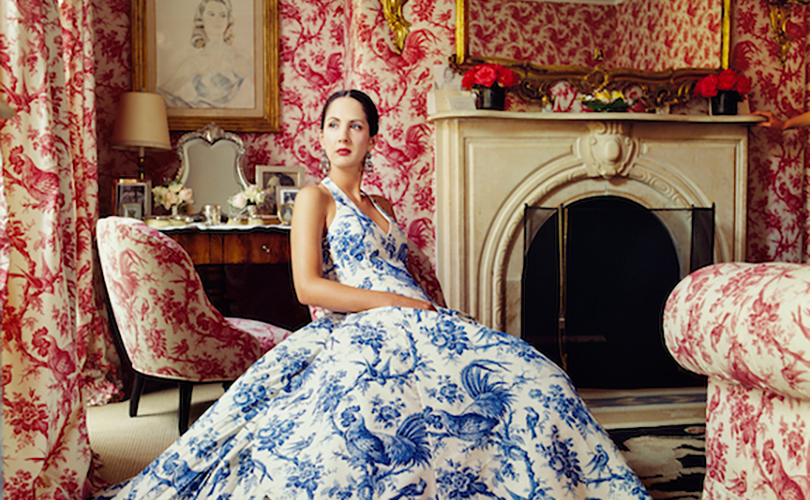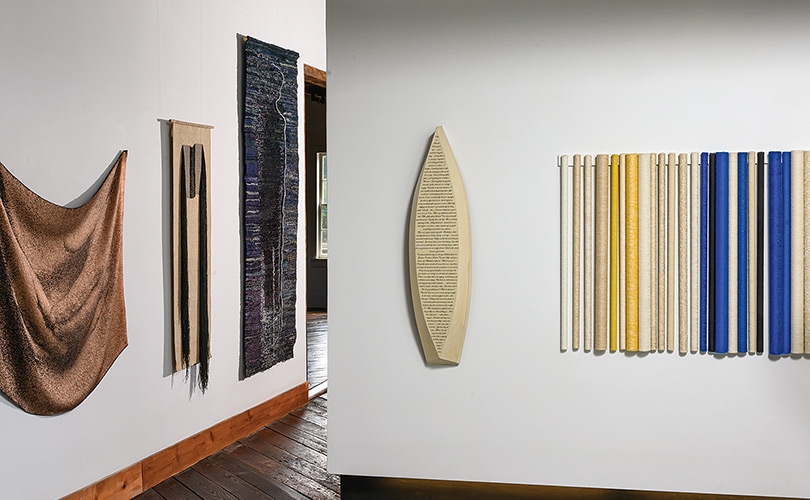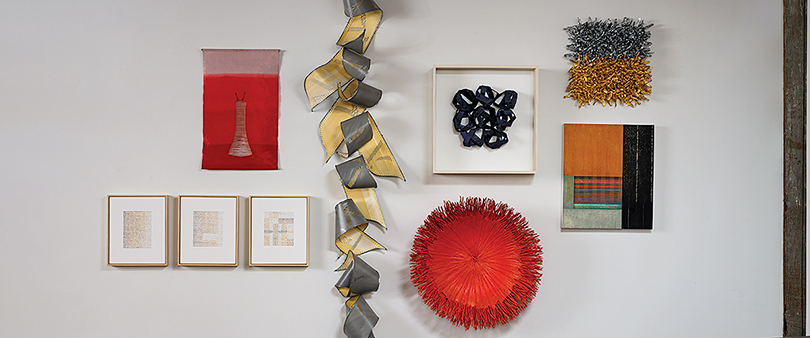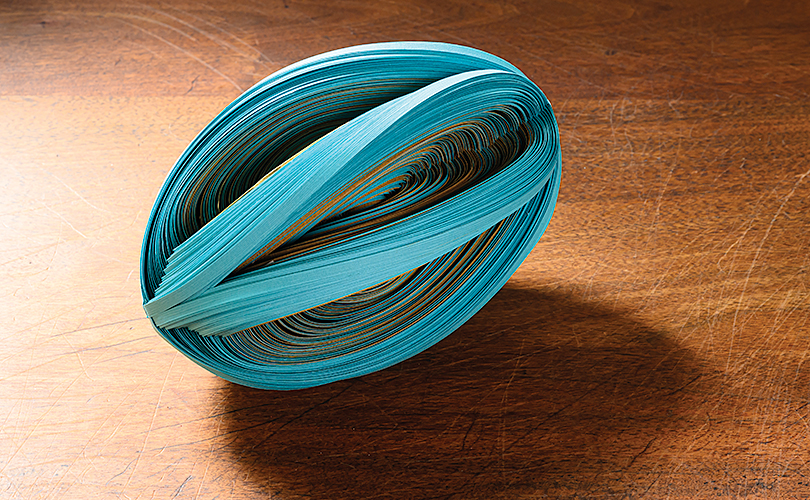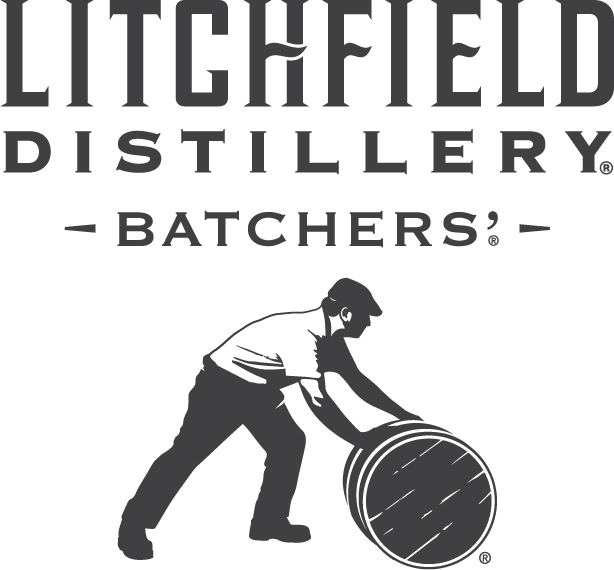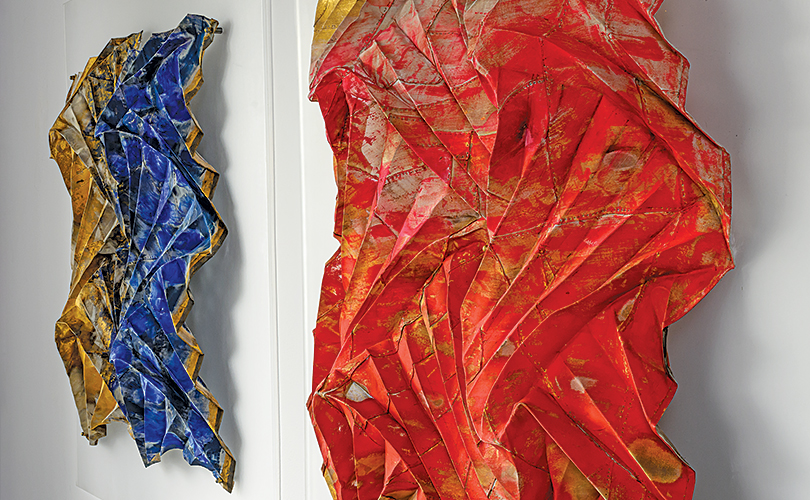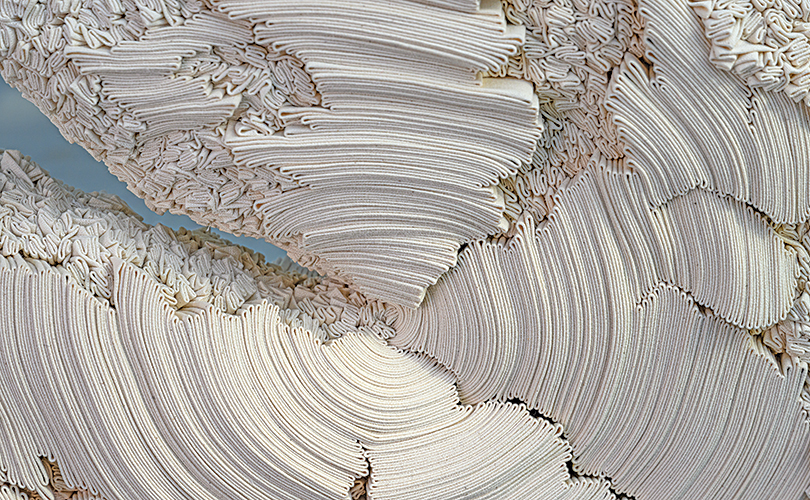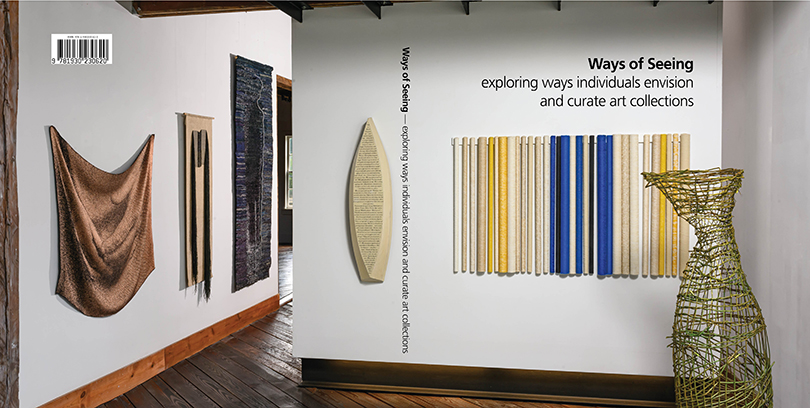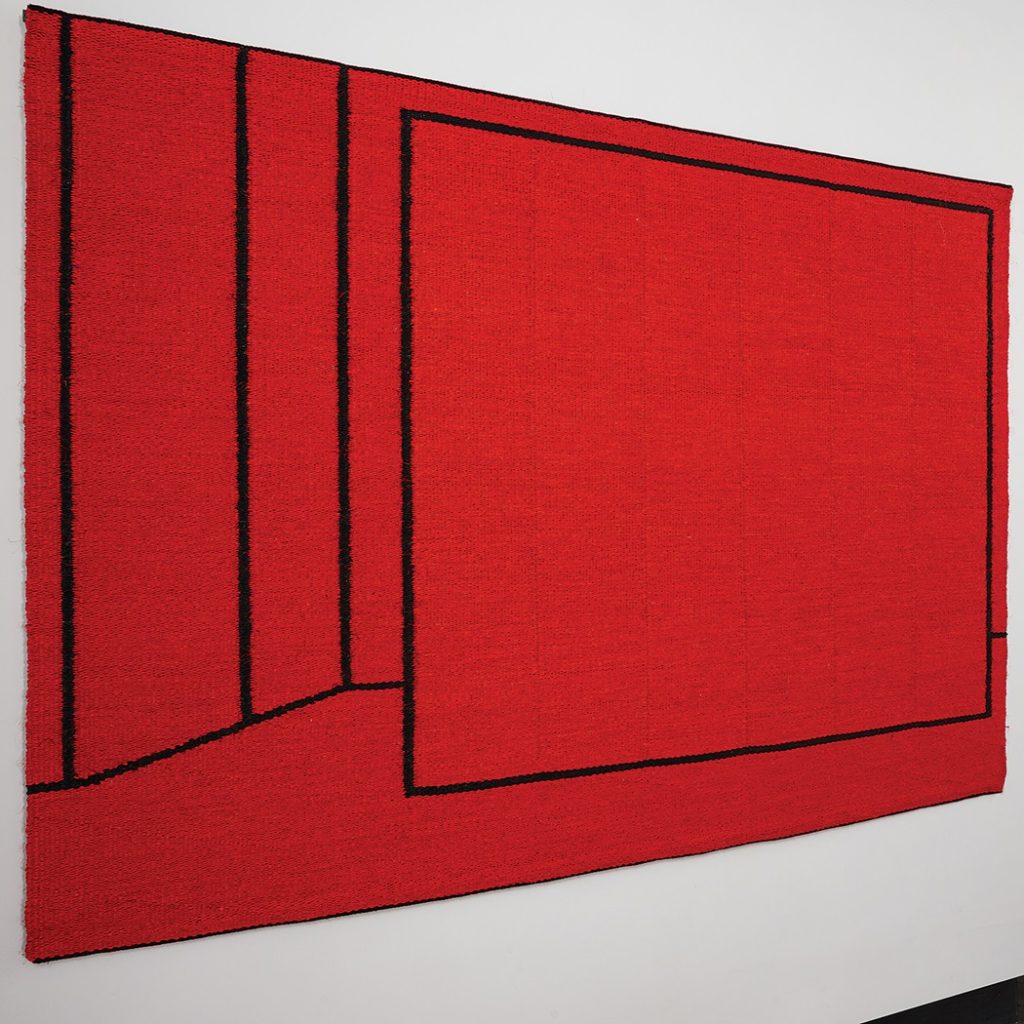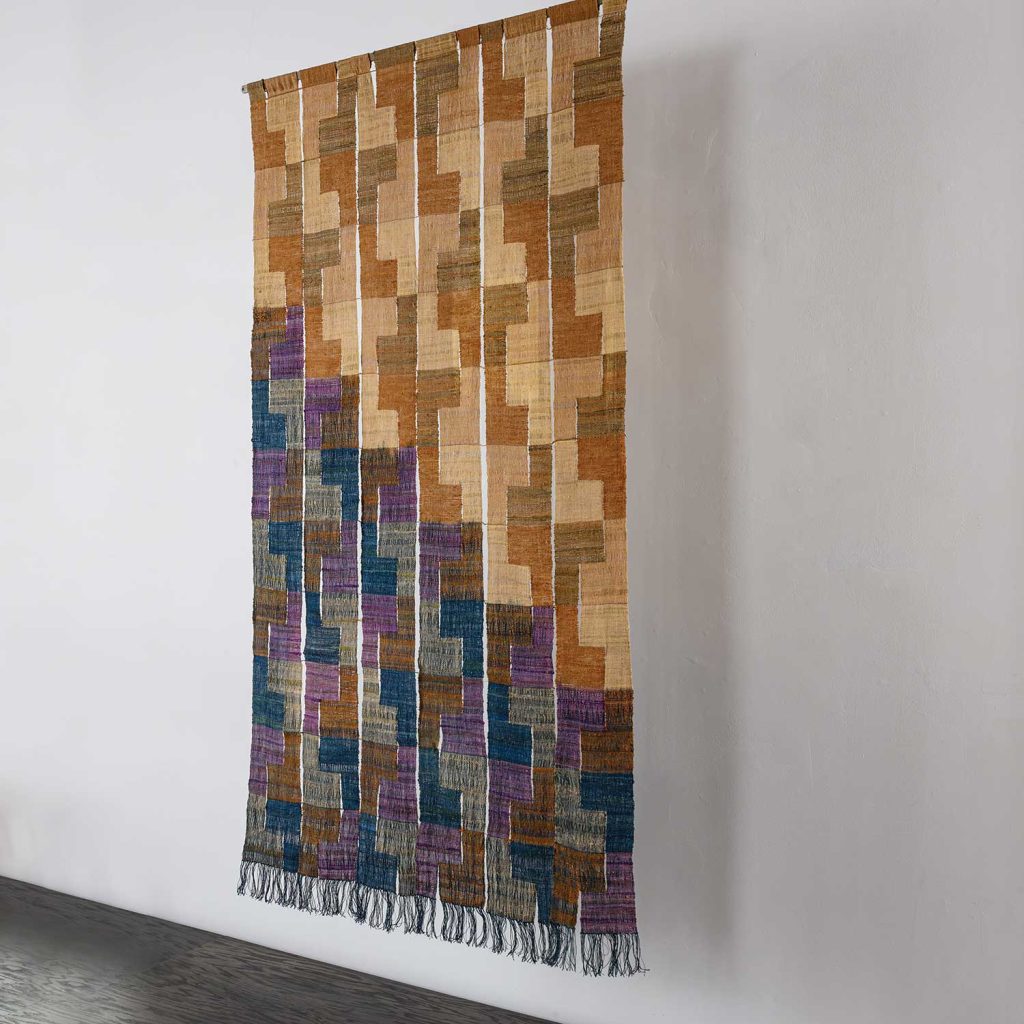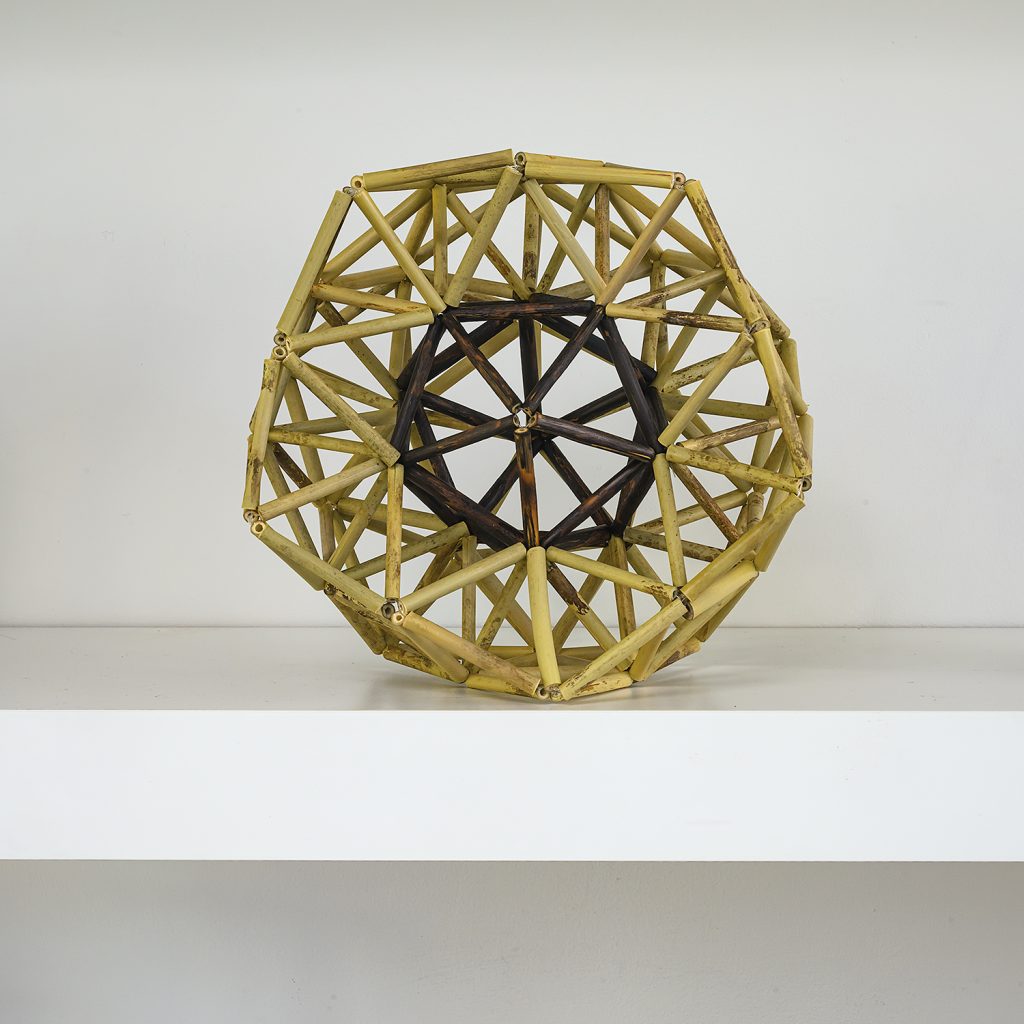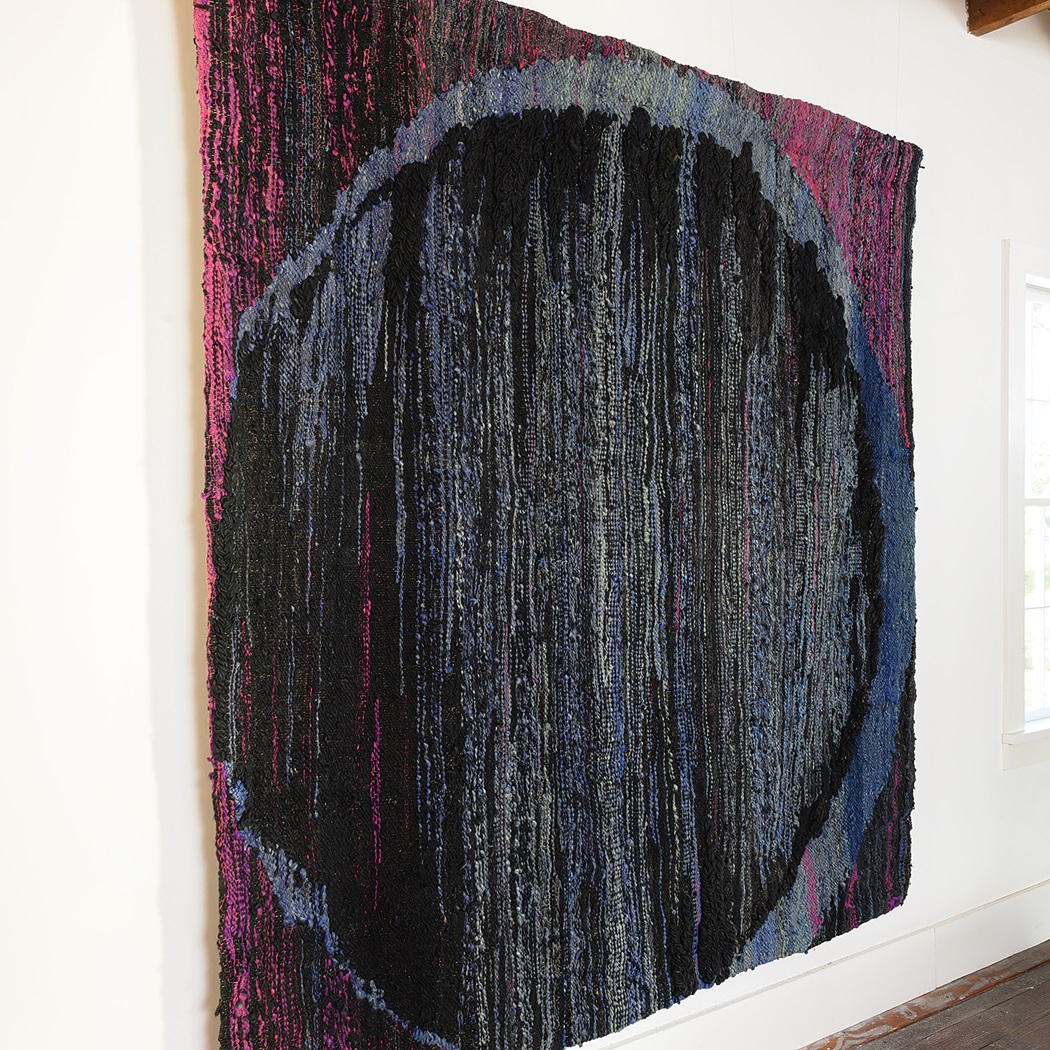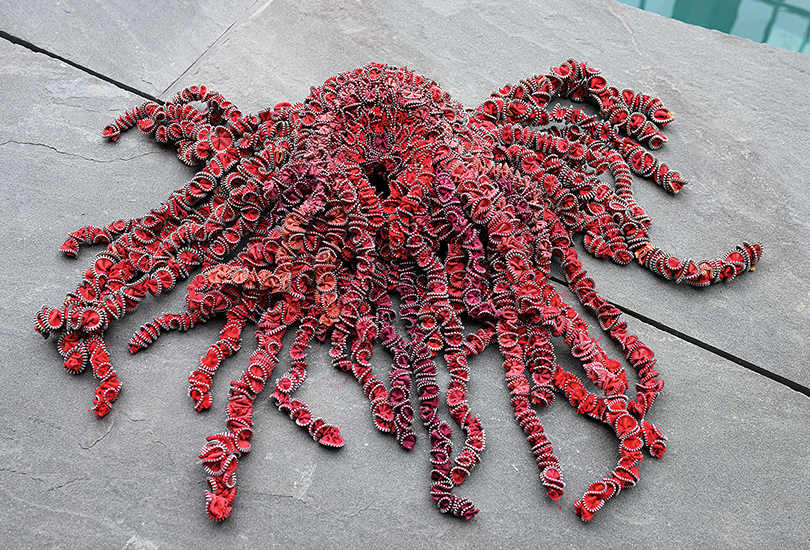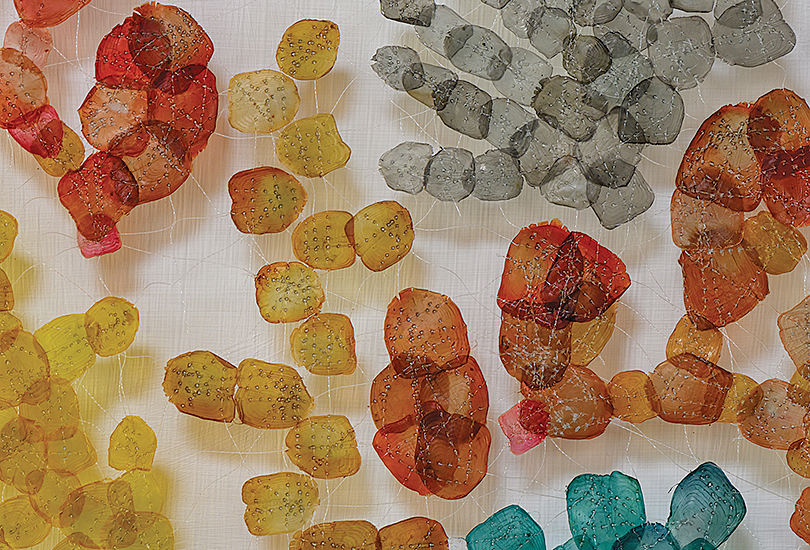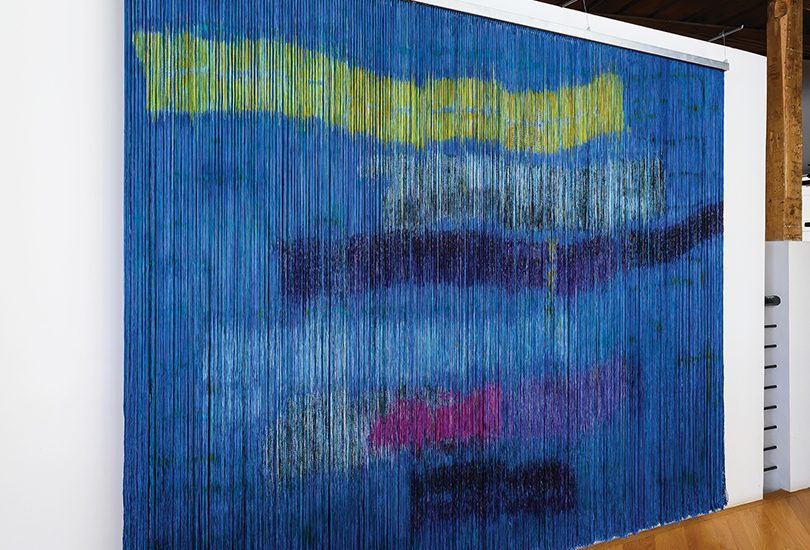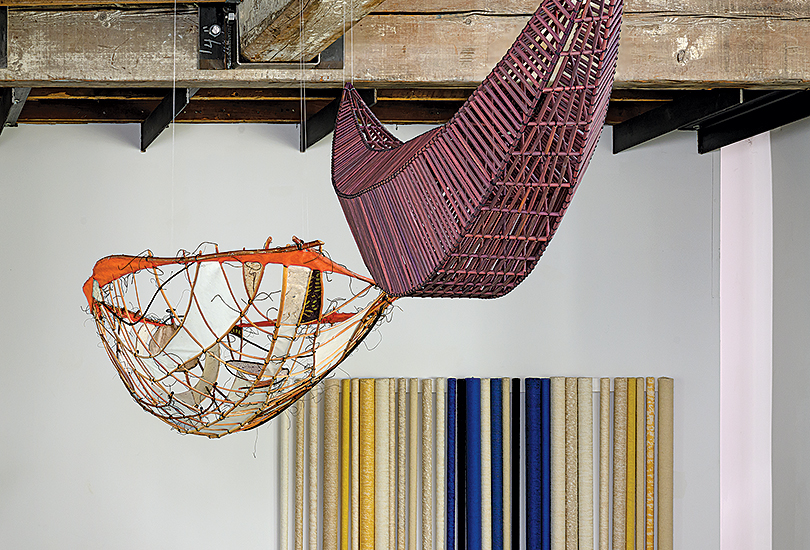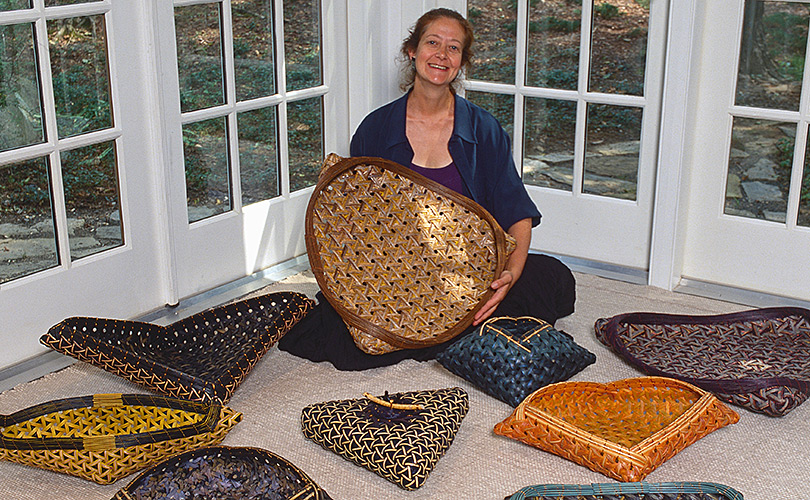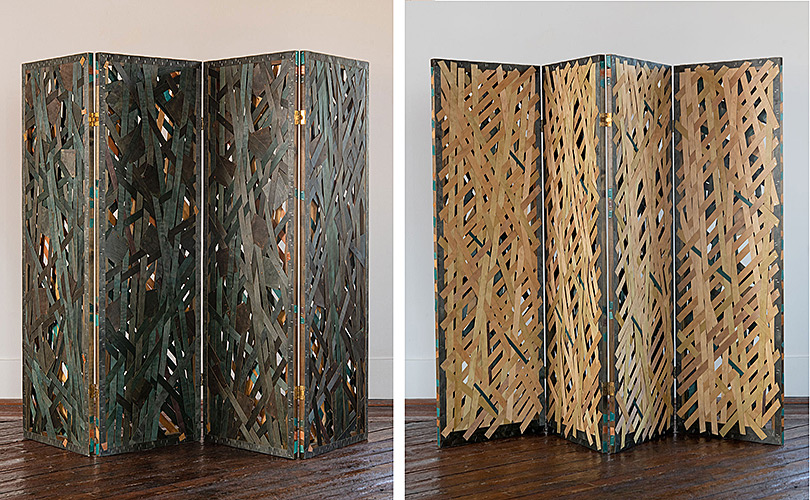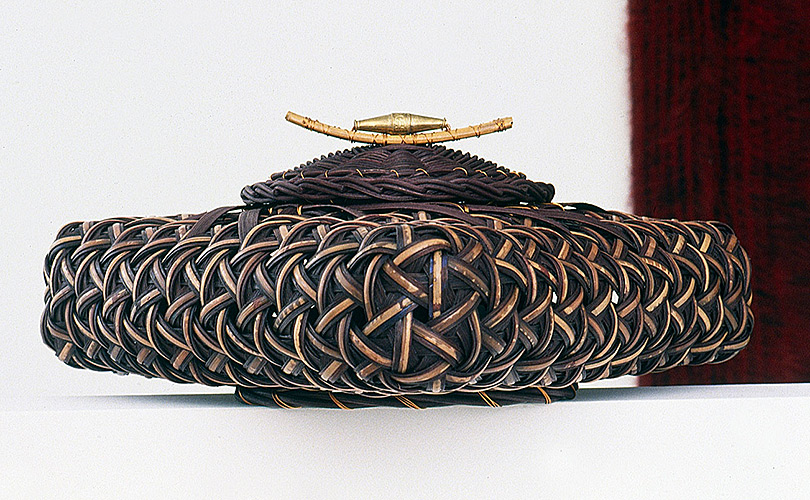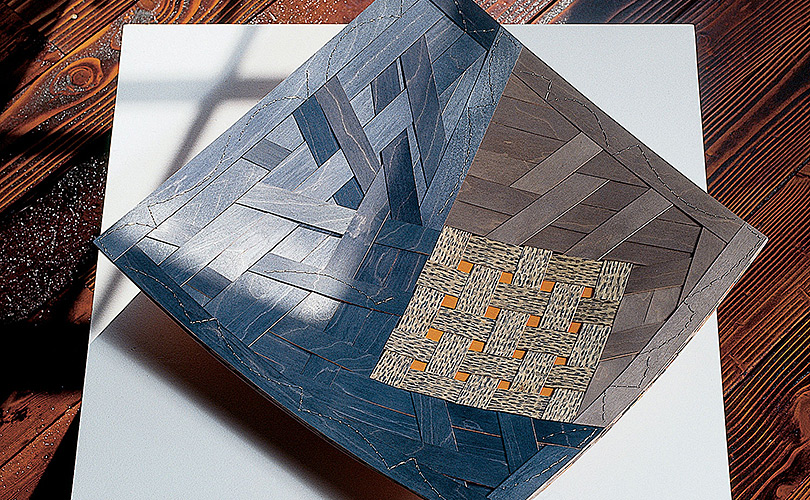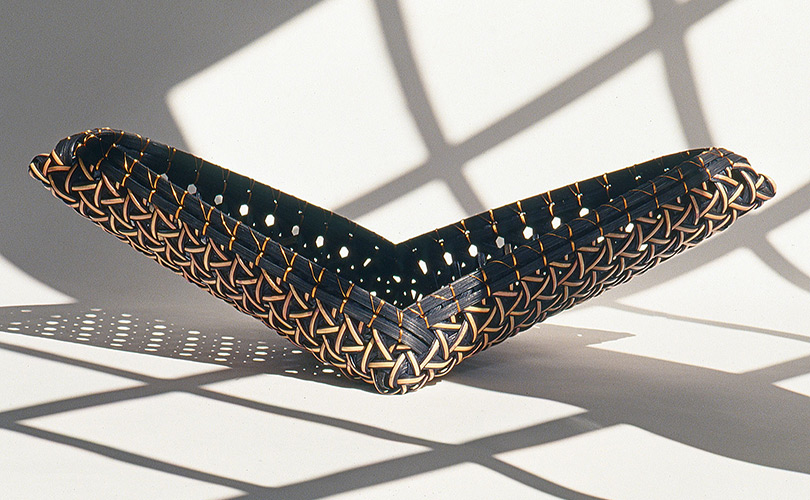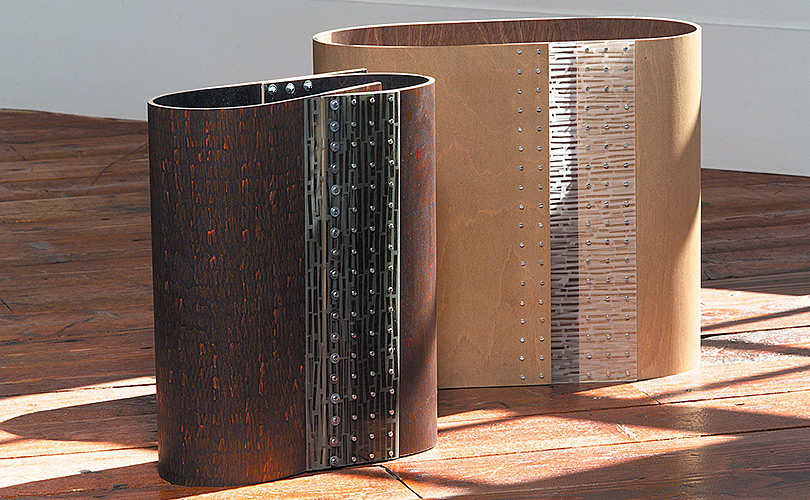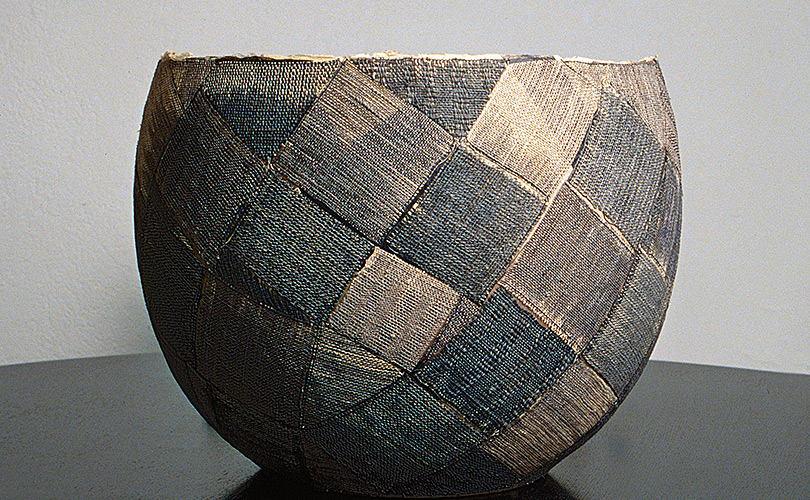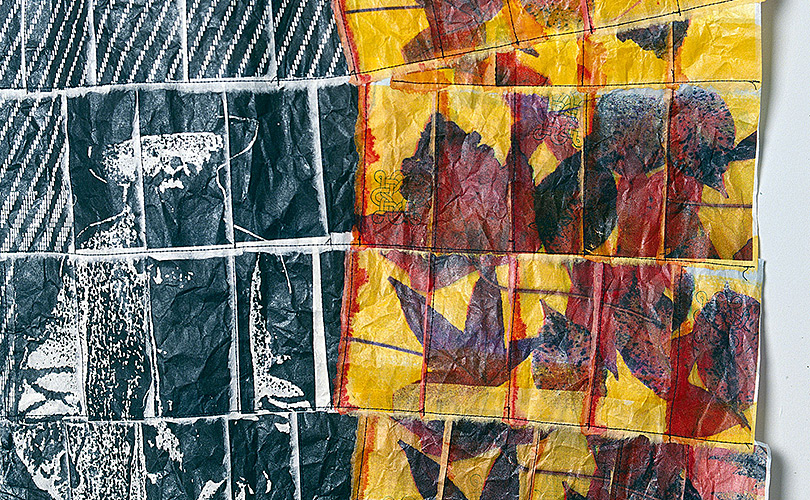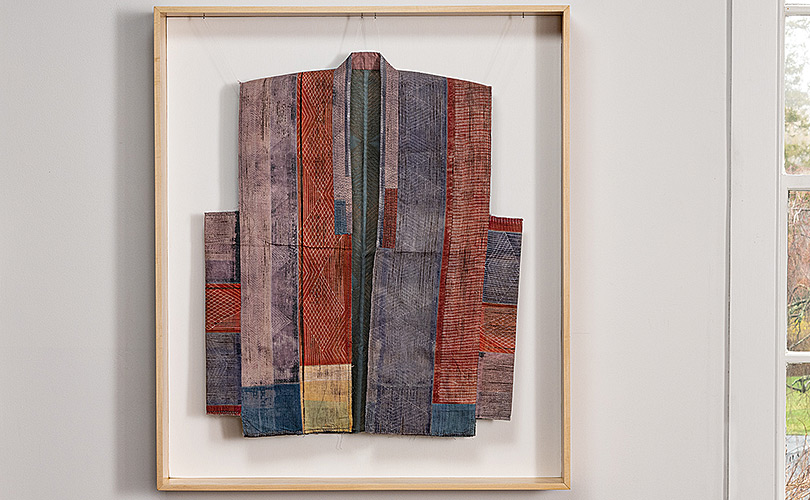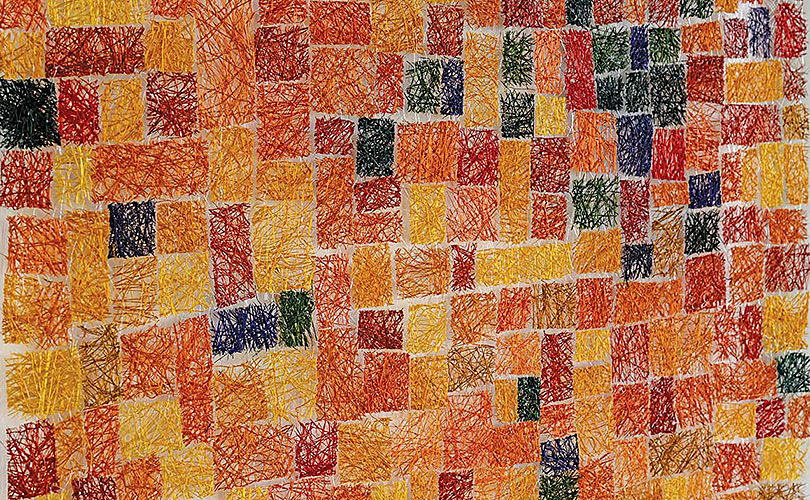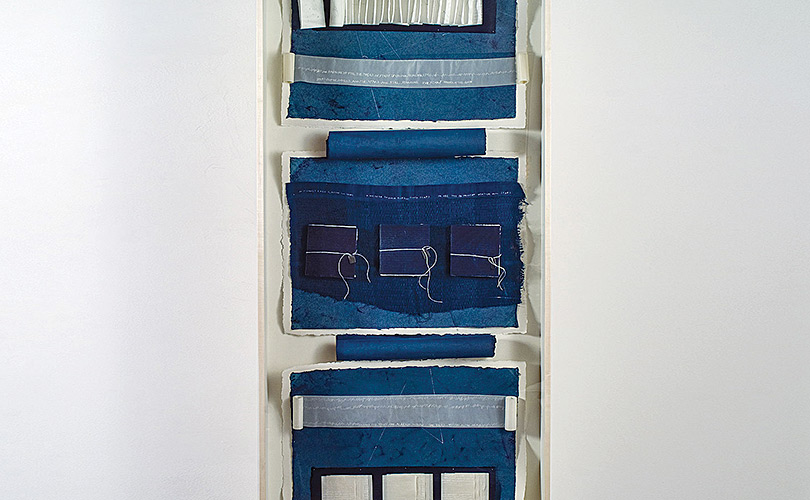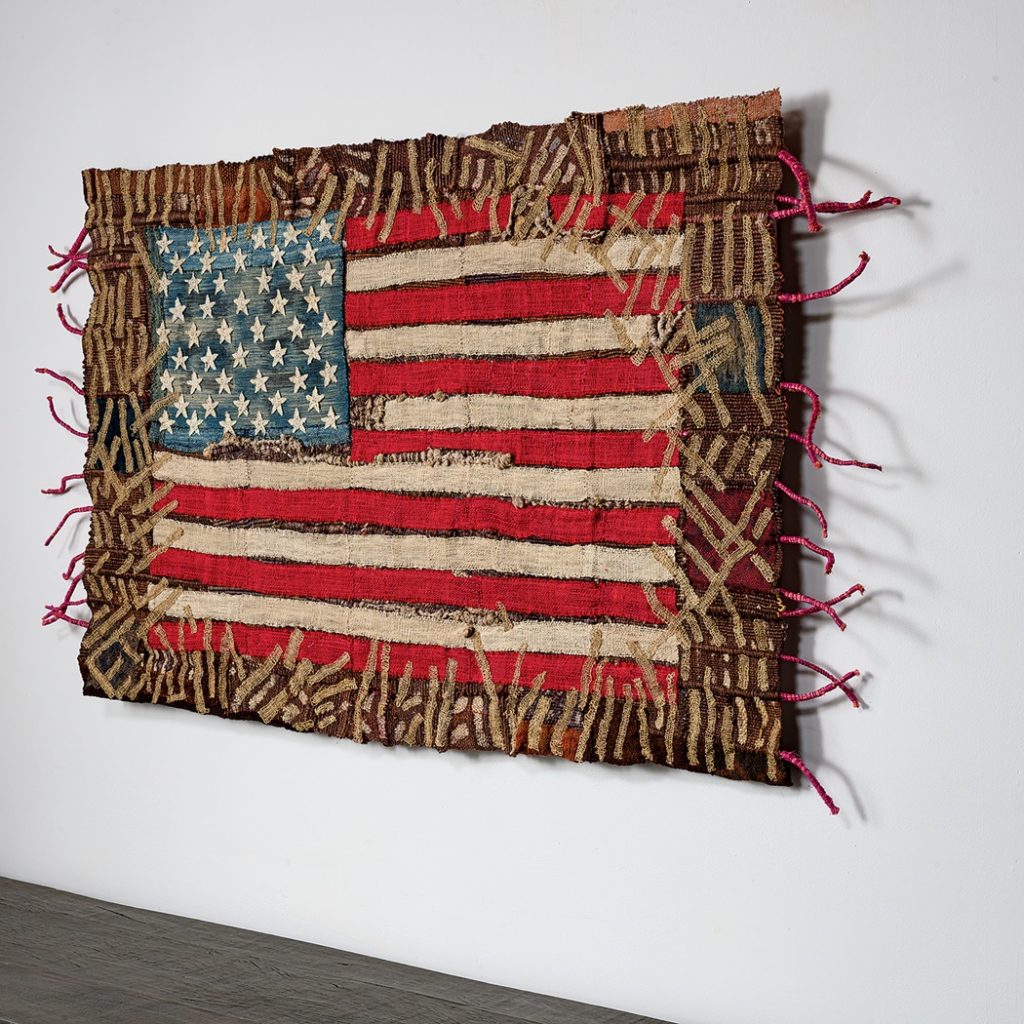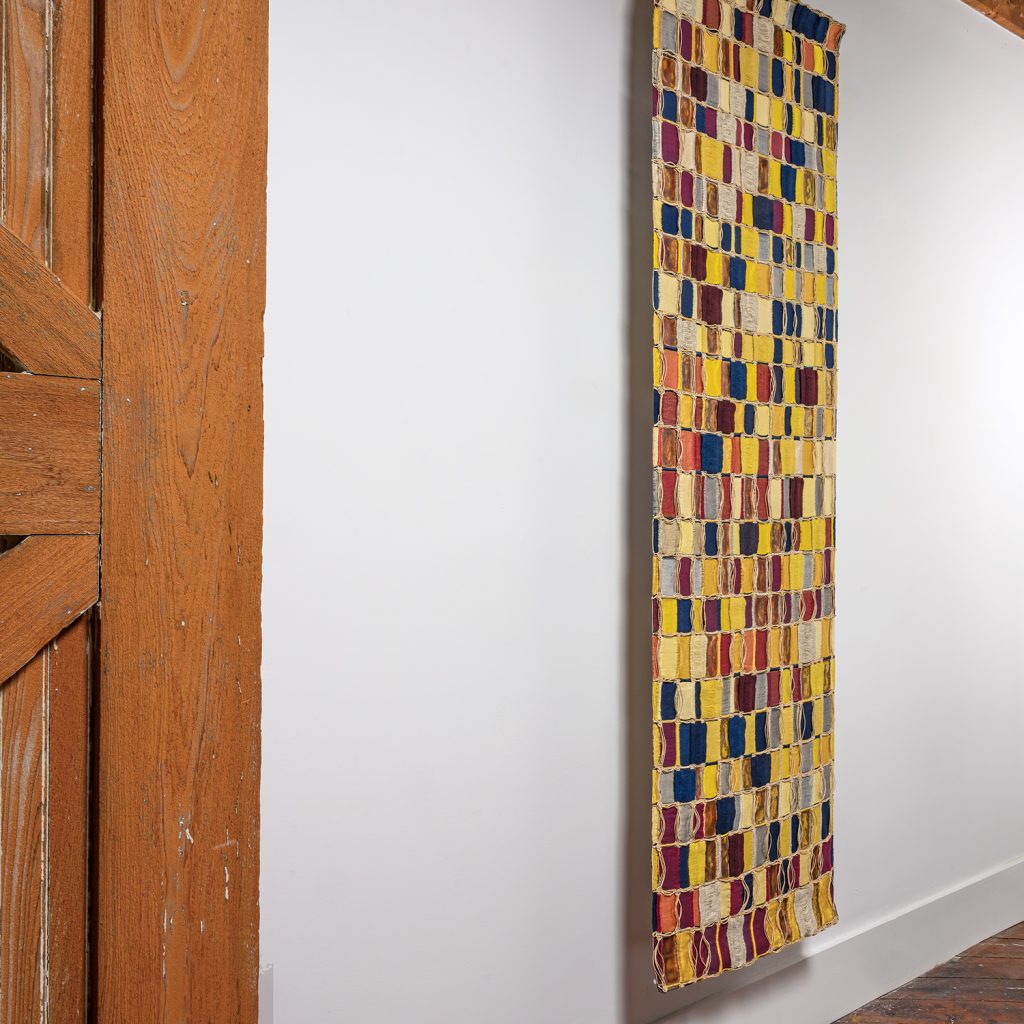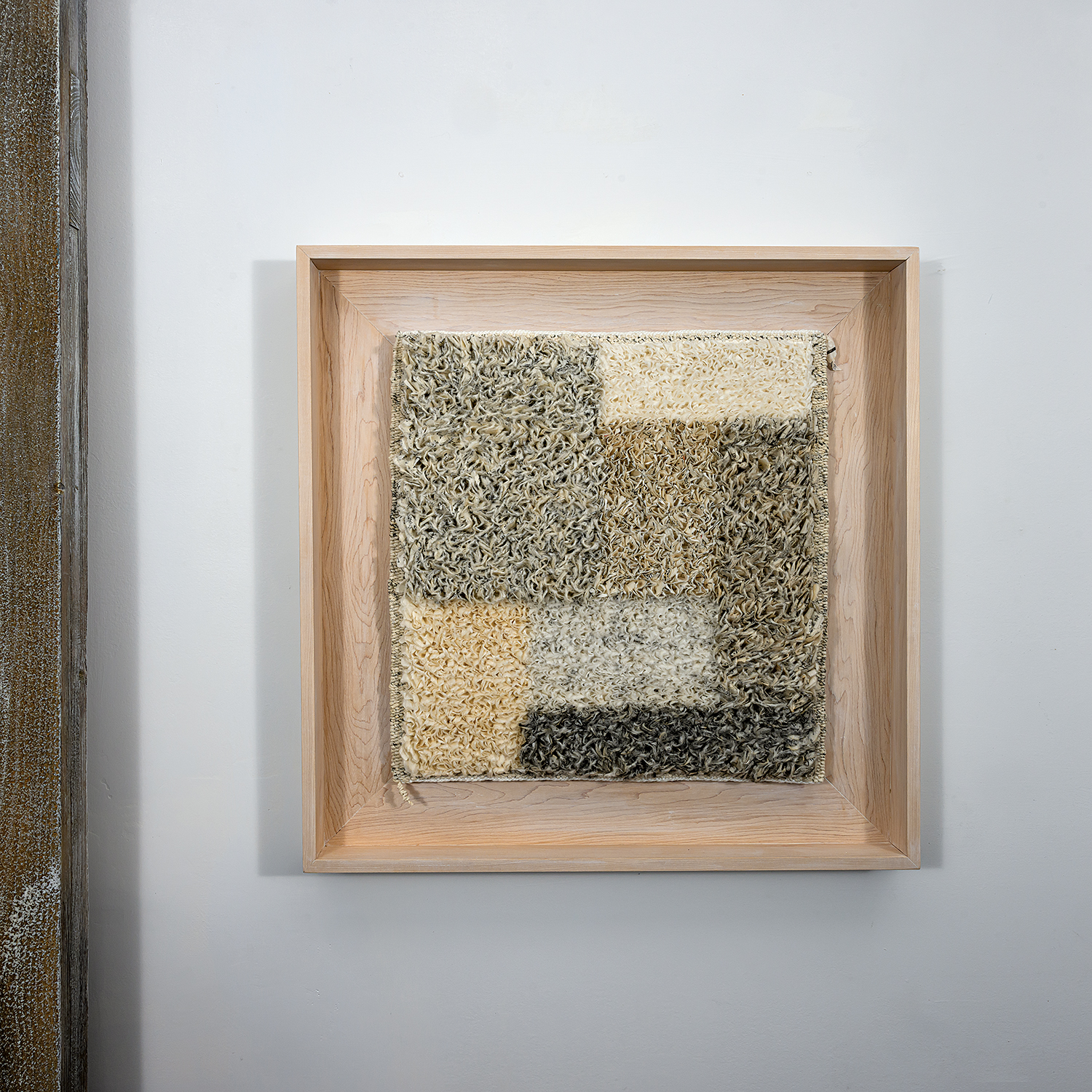Ways of Seeing, our Fall art event, is mid-exhibition today. It’s a celebration of collecting and the myriad ways that people acquire and arrange art. We’ve put together some groupings within the show and thought of others. We’ll share some of them below for those of you who can’t attend in person. For example, collecting by material, even one as ubiquitous as paper, can result in a varied collection. We put together a wall of works on paper: a print using xerography by Katherine Westphal, a painting on paper by Claude Vermette, collages by Norma Minkowitz and Hideho Tanaka, an intricately folded paper work by Dail Behennah, a composition of twisted commercial paper by Wendy Wahl, and an assemblage of colored sandpaper by Marian Bijlenga.

Katherine Westphal, 10w Amphora and Fern, 1993; Wendy Wahl, 2ww 7 by 7 and 22, 1999; Marian Bijlenga, 37mb Luitzen, 2019; Hideho Tanaka, 31ht Emerging 008, 2016; Norma Minkowitz, 114nm The Seeker, 2014; Claude Vermette, 126c Untitled, 1980; Dail Behennah, 56db Two Golds, 2019; Toshio Sekiji, 26ts Lacquered and Torn, 1998. Photo by Tom Grotta
A more unusual material choice — assembling items made of materials from the sea, will also result in a wildly diverse group of works. We’re showing baskets of seaweed, wall work of fish skin and fish scales, and works that incorporate sea sand and sea stones.
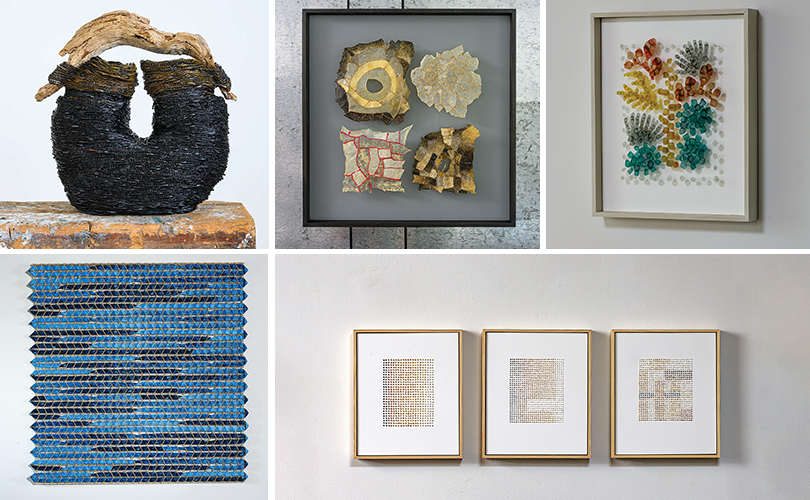
Collecting by artist can yield a broad mix of results. Choosing a category, like Polish, LQBTQ+ or self-taught artists, can result in considerable variation. Even a single artist, if it is one who experiments relentlessly like Jiro Yonezawa, can ground a surprising collection.
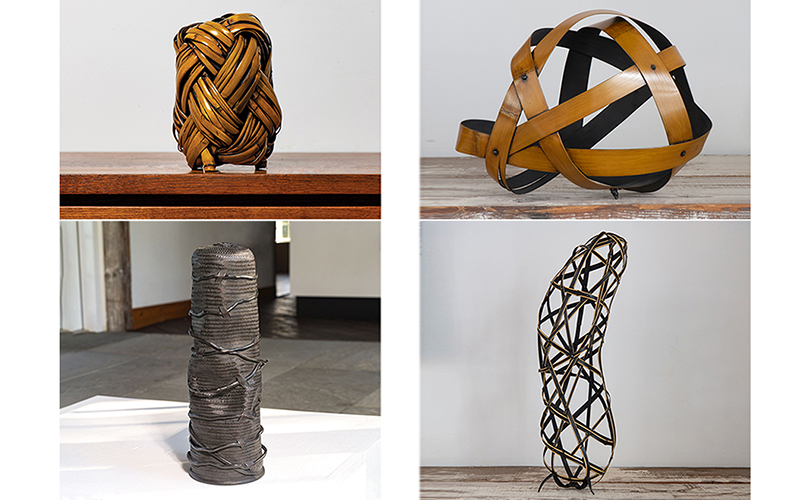
There are four very different works by this artist in Ways of Seeing, and they don’t even include the wide bamboo spheres which he has created more recently.
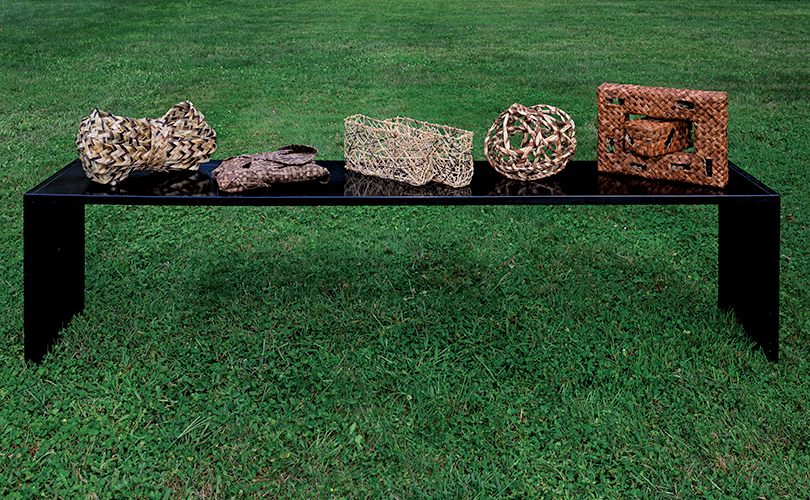
650hs Suspended Decision, 2021; 620hs From 2 to 3 Dimensions V; 643-655hs A Line of Willow, 2020; 639-651hs Bound to Continue VII; 625hs Structural Discussion VI, 2016
Basketmaker Hisako Sekijima, who has worked in everything from cherry bark to kudzu is another example of someone who can be collected in multiples. Lia Cook is another — her practice has moved in several different and exciting ways through out her career.
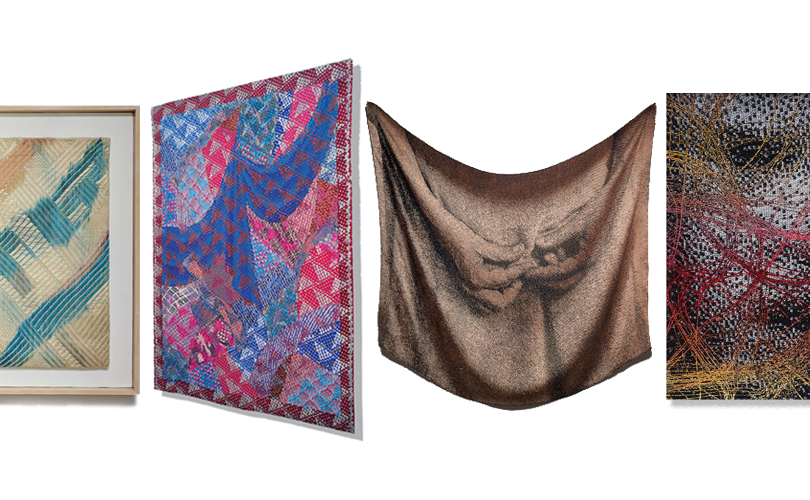
Then there are them groupings — we are showing art related to water, but even a color, like Picasso’s blue period, can be an energizing organizing principle. We’ve gathered weavings and objects that meet that criteria:
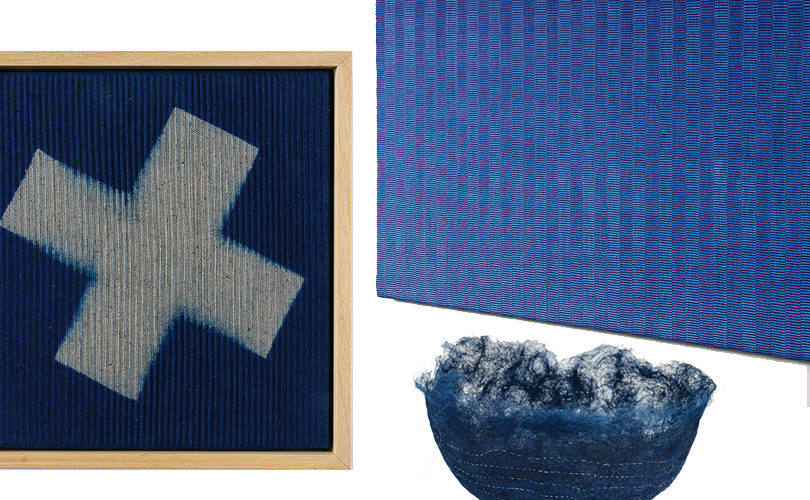
There are a few days to see our compilations in person. Or you can order the catalog: https://store.browngrotta.com/c-54-ways-of-seeing/
Happy Hunting!
Ways of Seeing: how individuals envision and curate their art collections
Through September 29, 2024
browngrotta arts
276 Ridgefield Road
Wilton, CT 06897
https://browngrotta.com/exhibitions
Gallery Dates/Hours:
Monday, September 23rd through Saturday, September 28th: 10am to 5pm (40 visitors/ hour) Sunday, September 29th: 11am to 6pm [Final Day] (40 visitors/ hour)
Safety protocols:
Reservations strongly encouraged; No narrow heels please (barn floors)


